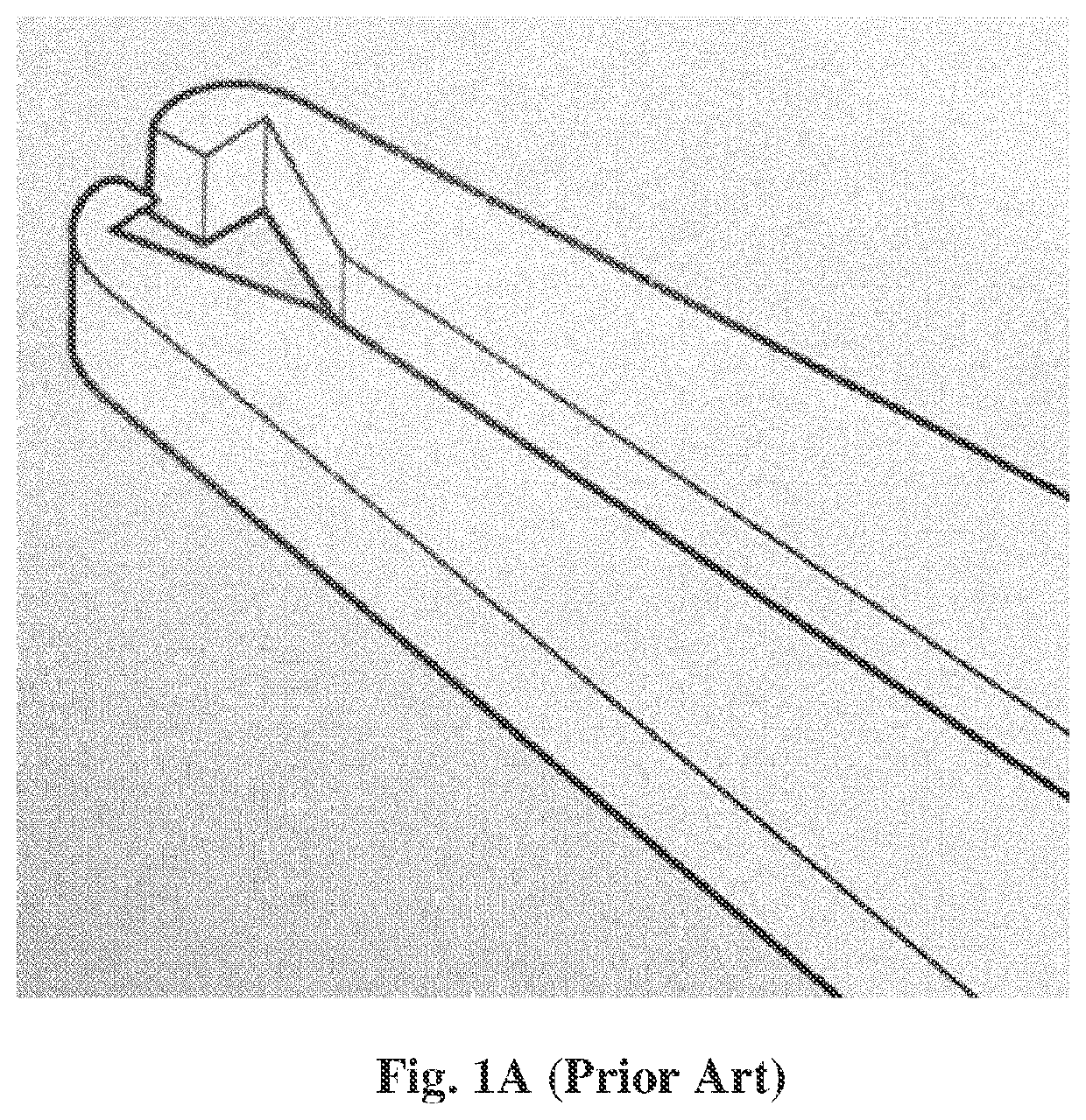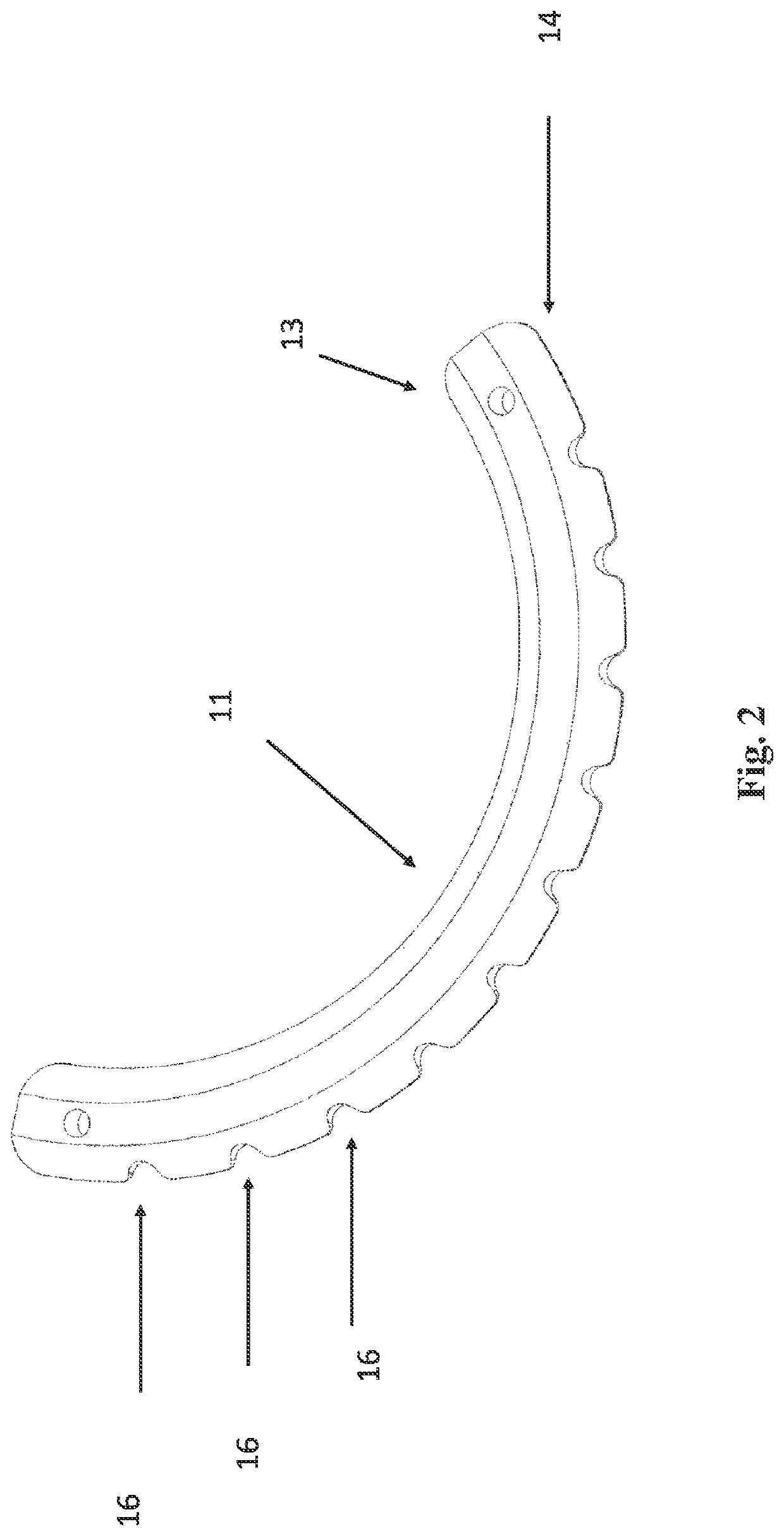Intracorneal implant and injector to treat corneal disorders
a corneal disorder and intracorneal implant technology, applied in the field of ophthalmological surgery, can solve the problems of difficult manual manipulation of intracorneal segments and difficult manipulation of segments, so as to prevent any sudden movement, improve or facilitate the thrust of the instrument, and achieve the effect of preventing any loss of physiological functionality
- Summary
- Abstract
- Description
- Claims
- Application Information
AI Technical Summary
Benefits of technology
Problems solved by technology
Method used
Image
Examples
Embodiment Construction
[0024]FIGS. 2 and 3A show an intracorneal insert or implant 11 of a rigid material such as medical grade CQ transparent acrylic or PMMA (PolymethylMethacrylate); alternatively, it can be manufactured with Prolene or another plastic material compatible with corneal metabolism. The intracorneal insert 11 has the shape of a circular segment of 135° measuring 0.15 mm in plan, having a constant thickness in the medial plane arc 12, gradually flaring to the inner 13 and outer 14 chords of the segment 11.
[0025]This insert 11 has an inclination of 0°, i.e. it has no inclination. In FIG. 3B a similar insert 11′ is shown but the inclination 16′ is 17° and FIG. 3C shows another similar insert 11″ with an inclination 16″ of 34°. The inserts 11 can have 5; 6 or 7 mm central diameter. The dimensions of the segments are critical with a tolerance of + / −15 μm (micrometers) to have predictable results. The description so far is applicable to conventional inserts such as those manufactured by Ferrara ...
PUM
 Login to View More
Login to View More Abstract
Description
Claims
Application Information
 Login to View More
Login to View More - R&D
- Intellectual Property
- Life Sciences
- Materials
- Tech Scout
- Unparalleled Data Quality
- Higher Quality Content
- 60% Fewer Hallucinations
Browse by: Latest US Patents, China's latest patents, Technical Efficacy Thesaurus, Application Domain, Technology Topic, Popular Technical Reports.
© 2025 PatSnap. All rights reserved.Legal|Privacy policy|Modern Slavery Act Transparency Statement|Sitemap|About US| Contact US: help@patsnap.com



